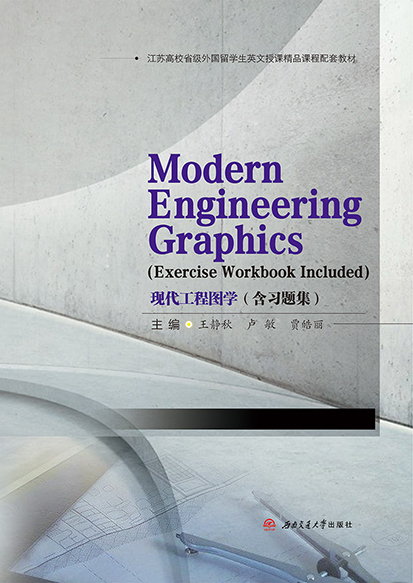-
 工程材料(第二版)
工程材料(第二版)作者:贺毅, 向军, 胡志华, 主编
本书为教材。共十章,主要从机械工程的应用角度出发,阐明机械工程材料的基本理论,介绍材料的成分、加工工艺、组织结构与性能的关系,了解常用机械工程材料及其应用等基本知识,具备合理选择、正确使用材料的能力,包括金属材料的力学性能、纯金属的结构与结晶、合金的结构与结晶、金属的塑性变形及再结晶、钢的热处理、工业用钢、铸铁、有色金属、非金属材料、机械零件的失效及典型零件的选材。本书内容具有较强的针对性,并具有较高的理论指导价值和实践指导意义。
-
 工程机械理论与设计
工程机械理论与设计作者:管会生
本书通过基础理论介绍使读者了解工程机械作业对象的物理机械特性,工作装置的切削、破碎机理,行走机构的行驶理论,牵引力与各阻力的关系,工程机械牵引参数和牵引特性以及动力性能等内容。通过设计方法介绍使读者了解工程机械产品的设计思想、设计原则要求,设计方法和手段,并清楚设计过程和步骤。
-
 工程造价管理
工程造价管理作者:任彦华 董自才
本书是高等学校工程造价、工程管理专业及其他相关专业的本、专科教材。《工程造价管理》是为适应现在建设工程招投标及工程造价管理改革的需要,建立在建设部新颁发的《建设工程工程量清单计价规范》(GB50500-2013)、《建筑安装工程费用项目组成》(建标[2013)44号)、2013版云南省造价计价依据等最新发布的有关标准规范和相关文件基础上而编写的。本书主要内容包括:概论、工程造价构成、决策阶段、设计阶段、施工阶段、竣工验收、竣工决算、工程造价审计和司法鉴定、计算机管理。每章后附有思考题。本教材也可作为建设、设计、施工和工程咨询等单位从事工程造价的专业人员参考用书,以及全国建设工程造价员资格考试的参考用书。
图书分类
Book classification- 本书为英文版工程图学教材,根据最新的国家标准编写而成,主要包括设计与图形语言表达、投影基础、从三维物体到二维图形、从二维图形到三维物体、机件的常用表达方法、标准件和常用件、零件图和装配图8章内容。本书配套习题集,利用二维码技术,实现三维模型和动画的立体化展现,并结合现代教育技术和互联网信息技术,充分利用图形、三维模型、动画等多种形式,帮助学生理解工程图学知识点。本书结构合理,图文并茂,适用于高等教...查看更多
- Foreword
The “Engineering Graphics” course of Nanjing University of Aeronautics and Astronautics is a National Excellent ...查看更多
-
Chapter 1 The Graphic Language for Design and Communication 1
1.1 The Graphic Language 2
1.2 Drawing and ...查看更多 - 王静秋,南京航空航天大学副教授,工学博士;2017年9月—2018年9月,美国圣母大学访问学者;作为工程图学系列课程的主讲教师,参加了工程图学国家级精品课程、国家级资源共享课和江苏省在线开放课程等课程。




